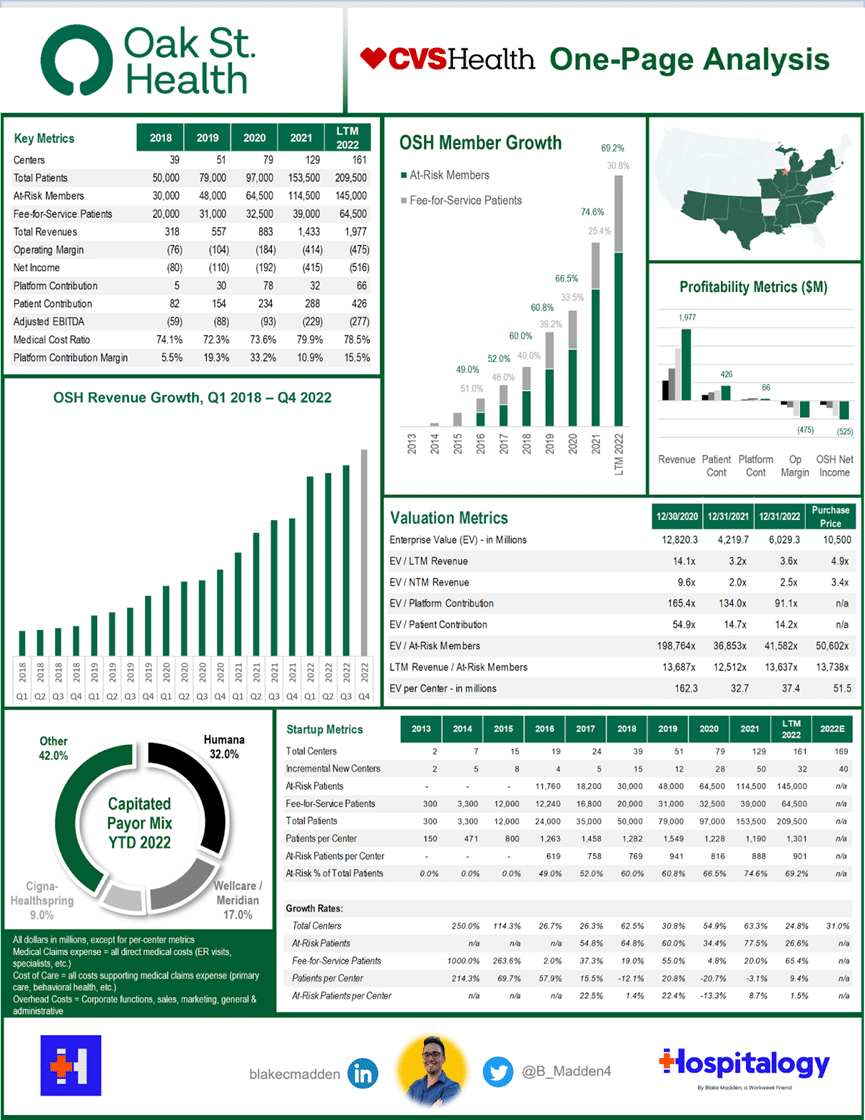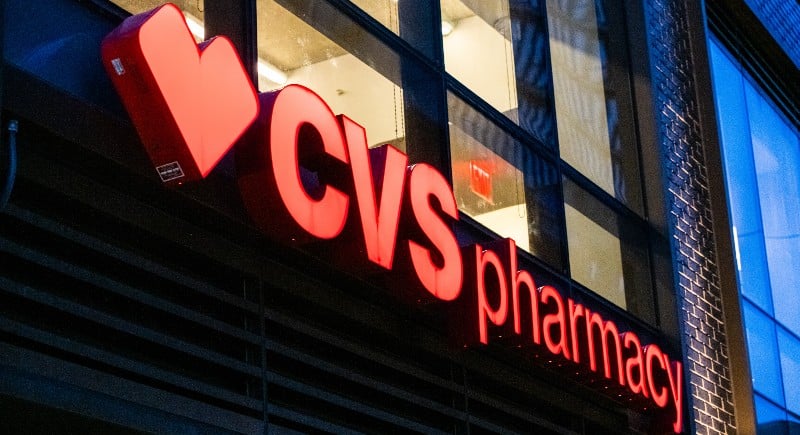Many analysts and leaders alike are aghast at CVS’s acquisition of Oak Street Health (OSH) for $10.6B, which represents a revenue multiple of 3.4x to 4.9x. But instead of speculating about whether this is a wise financial decision based solely on what we know now about CVS and OSH as separate entities, it’s more productive to consider how CVS’s strategy execution moving forward will make this acquisition succeed or fail.
Over the last year, CVS’s leaders have been quite vocal about their desires to expand the company’s primary care footprint. In 2022, they were in discussions to buy Cano Health, an OSH-like model mostly concentrated in Florida, and rumored to have lost the bid for One Medical to Amazon. At the end of 2022, they did acquire Signify Health, a value-based home health company. And last month, they led a $100 million investment into Carbon Health, a consumer-focused primary and urgent care model. In the retail health care giants’ game of Hungry, Hungry Hippos, it appears that Karen Lynch, CVS’ CEO, doesn’t wish to be left behind.
Continuing its acquisitions and purchasing OSH allows CVS to 1) expand and diversify its primary care offerings, which is a stated strategic priority; 2) further establish itself as a provider organization, and 3) capture revenue from other payers (plus recapture the small amount of revenue that Aetna pays to OSH).
But as is the case in all mergers and acquisitions, the devil is in the integration details. Below, I outline what CVS will need to do in order to create value from this acquisition and avoid a Livongo repeat.
Invest in profitability, not growth
Last week I wrote about Good Money Bad Money Theory, and the role the type of funding a startup receives plays in its ability to establish a viable business model. To fuel OSH’s continued development, will CVS grant it good money or bad?
Ideally, they’d pause on expansion and ensure OSH can prove its own viability before allowing it to grow further. In other words, CVS would infuse OSH with good money, or funding that is patient for growth but impatient for profit. This would require OSH to carefully articulate its key assumptions for profitability (i.e., what must prove true for OSH to be profitable) and to clearly outline how it would go about testing these assumptions.
OSH’s business model has many strengths, which I’ve written about in detail before, but making money is not currently one of them. Blake Madden, who writes Workweek’s Hospitalogy newsletter, highlights this effectively in his graphic below. If CVS were to champion growth over profitability in this acquisition, they’d be scaling a money-losing machine.

Don’t discount or discard OSH’s core customers
In addition to the type of funding it would grant OSH, how CVS would integrate it into its overall business is critical. As I’ve discussed, the majority of mergers fail to create the value acquirers intend. This is because many leaders misunderstand the true value of their acquired assets and mistakenly integrate them into their core business model when they should keep them separate.
As a result of regulation requirements, CVS would have to keep OSH separate from its core businesses, much like Optum’s separation from UnitedHealthcare. This legal necessity would likely work to its advantage, but it doesn’t guarantee success. To ensure value creation, CVS must execute three critical steps:
- Clearly state why they are acquiring OSH (M&A is driven by the desire either to improve operations or change growth trajectory; and in this case, it’s the latter),
- Clarify what customers hire CVS and OSH to do, and
- Based on #1 and #2, clarify how they should integrate these business models – or not.
Regarding this acquisition, the most critical step is #2. That’s because #1 is fairly straightforward, and #3 is fairly regulated. To avoid the Teladoc/Livongo misstep and not write-off a similarly egregious $6.6B in impairment charges, CVS would do well to ensure that if a goal of acquiring OSH is to capture more revenue that they don’t alienate OSH’s biggest customers. Looking back at Blake’s analysis, it’s clear Aetna isn’t currently one of them.
So, CVS must ask itself, “If we effectively acquire OSH, does this drive away the payers currently supporting the model’s revenue growth?” It’s possible.
Therefore, while most would agree that $10.6B is an excessive amount for CVS to pay for OSH, whether or not value will be created or destroyed in this transaction mostly lies within CVS’s control: Will they fuel OSH with good money, demanding proven profitability before any further expansion? And most importantly, do they understand how OSH’s current customers will react to a CVS acquisition?
Theory would predict that without a plan for thoughtful, nimble, and customer-focused integration, what appears to be a strategically-aligned purchase may not create the value CVS hopes it will. Time will tell.



